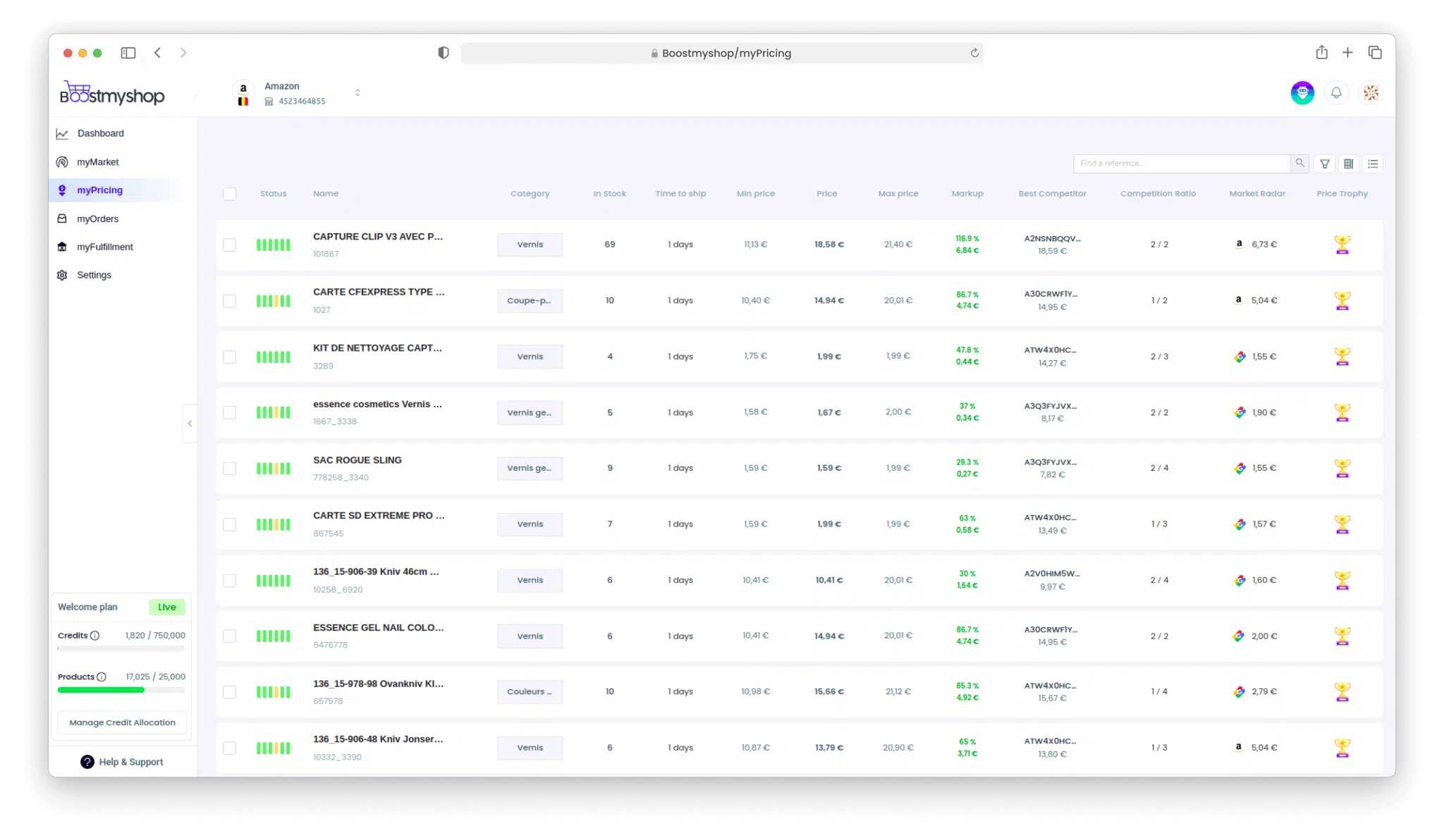Significant Ecommerce KPIs to keep an eye on
Usain Bolt’s 100m sprint in 9.58 sec in the 2009 Olympics cemented his legacy as the World’s Fastest Man of his era.
Just by reading the above sentence, we can understand the significance of the event. Now, we know this because we track metrics such as Name: Usain Bolt, Event:100m race, Olympic Year: 2009, Run Time: 9.58 sec etc. Ecommerce KPIs are like these metrics. They help you understand the significant events in your online business.
What are Ecommerce KPIs?
Ecommerce KPIs are tools to measure the health of your business. They provide metrics with which you can deeply understand your business performance. You can set KPIs based on your business objectives.
There are four main types of ecommerce KPIs:
-
Revenue
-
Traffic
-
Conversions
-
Customer loyalty
Why do you need Ecommerce KPIs?
“What is measured improves” – Peter Ducker
-
KPIs measure progress towards key business goals
-
They provide a high-level perspective
-
They are relevant across different departments.
-
Used for strategic decision-making.
How to know that you have the right KPIs to track?
“A useful metric is both accurate and aligned with your goals. Don’t measure anything unless the data helps you make a better decision or change your actions.” – Seth Godin
Well, Seth is right! You should make sure that the KPIs you have selected are the necessary ones to track. Maybe for a start consider tracking the KPIs :
-
Which creates an impact
-
Which can be measured accurately
-
Which can deliver real-time data
-
Which are actionable so that you can make improvements to them
List of important ecommerce KPIs and Metrics:
E-commerce is a rapidly growing industry and it is expected that by 2020, the e-commerce industry will generate $4.5 trillion in sales. The question remains: what are the most important KPIs for a successful e-commerce business?
KPIs for Revenue
Gross Profit – The amount of profit after subtracting the costs of production and distribution.
GP = Total amount of sales – Total costs of goods sold.
This is an important KPI of revenue as it helps you, web sellers, to create objectives and plan accordingly.
Cost of Goods Sold – The total of the expenses you make to sell your product i.e., including the manufacturing costs and all other costs directly associated with distribution and production.
Customer Lifetime Value – This calculates the worth the individual customers provide to your business. This helps you understand the cost per acquisition and focus on improving relationships with customers’ loyalty programs.
Churn Rate – Following the churn rate is highly important as it is following the customer conversion rate. This lets you know how many customers are leaving your brand and at what pace.
Churn rate =[ (Total number of customers at end of the month – Total number of customers at the beginning of the month) / Total number of customers at the beginning of the month]* 100
Customer Acquisition Cost – This delivers the amount spent to acquire a single customer. Analyze your marketing expenditures and how they break down to a single customer. Try to acquire customers with lower acquisition costs.
CAC = Cost spent on acquiring customers / Number of acquired customers
Repeat Purchase Rate – This identifies the percentage of customers that redo business with you. Helps to understand customer loyalty and makes sales plans accordingly.
RPR = Purchase of Repeat customers / Total Purchase.
Average Profit Margin – It is the percentage that represents your profit margin over a specific period. Ideally, you would want your average profit margin to increase as production or sales ramp up.
Average Profit Margin = Gross Profit / Revenue
Purchase Frequency – the average of orders you receive from your customers during a specific period of time. This is an important KPI to measure customer loyalty and to highlight underperforming product categories.
Purchase frequency = total number of orders/ total number of unique customers
The time between purchases – This is a customer behaviour KPI which indicates how long a customer stays away from purchasing a product from you again. You can create a specific campaign with respect to their behaviour.
Inventory Turnover – The number of times the inventory is sold throughout the course of the year. This helps you to calculate the web seller’s inventory need vs inventory present data to make optimizations.
Holding Inventory Ratio – This identifies the average cost of holding inventory before you sell it. Holding costs usually consist of storage, labour security and the equipment that you use to store the inventory. Generally, they are 25-30% of your inventory value
Revenue Per Visitor – The metric used to determine the average revenue generated per visitor.
Revenue Per Visitor = Total income / number of visitors in a specific period of time
Net Profit Margin – Metric to measure the store profitability. This is the margin of profit you generate after making all the deductions.
Net Profit Margin = (Revenue – Cost)/ Revenue.
KPIs for Traffic
Referral sources – Helps identify and track sources that are forwarding the most traffic to your website. e.g., PPC ads, social media searches or organic visitors etc.
Average Session in Website – This is the dwell time of a visitor on your website pages in a single session.
Avg. Session = Total Session Duration/ Total No. of Session
Bounce Rate – This helps to find the percentage of visitors who leave your website after viewing it only once.
Bounce Rate = Total No. of One Page visits/ Total No. of Entries to a Website
Cost per Click – Identifies the amount that was spent to have clicks on your ads.
CPC = Total Advertising Cost / Total Number of Ads Clicked
Traffic to lead ratio – provides better insights into how your traffic is performing. Monitoring the main sources of traffic is crucial. The traffic-to-lead ratio will identify pages that have the highest bounce rate, so you can make changes to those and also shows how much of your traffic is actually showing interest in your product or service.
Pageviews per session – Indicates the average number of pages a visitor views per session.
Pageviews per session = Total Number of Pageviews / Total Number of Visitors
Email Open Rate – Percentage of emails that are opened by your recipients. Depends on your subject lines in order to improve your open rate.
Email Open Rate – (Total no. of emails that opened/Total number of emails sent)*100
Email click-through rate – Percentage of email recipients who click the links that you have provided in the email.
CTR= (Total number of individual clicks/total number of email open)*100
Email bounce rate – Percentage of emails in marketing campaigns that were not delivered to the prospects.
Email Bounce Rate = (Total number of emails bounced/Total number of emails sent)*100
Email List Growth Rate – Metric with which you can calculate the growth of your email list.
Email List Growth Rate = [(Number of New Subscribers – Number of Unsubscribes) / Total Subscribers ] x 100
Email Conversion Rate – Identifies the number of people who purchased following the links provided in the emails.
Email Conversion Rate = (Total number of emails conversions /Total number of emails opened )*100
KPIs for Conversion
Cost per conversion – Expense made to turn a visitor into a customer. This includes all advertising costs. It’s the total cost you pay for an advertisement that makes a successful conversion.
Conversion by Device Type – l number of conversions specific to a device type like mobile, tablet or desktop. This is an important KPI with which you can identify how to improvise design your webpages for every device type.
Conversion Rate – Percentage of people purchasing your products.
CCR = (Total conversion/Total number of Vistiors)*100
Shopping cart conversion rate – Percentage of people actually completing the purchasing process.
CAR = 1 – (Total Number of Completed Transactions / Total Number of Shopping Carts) x 100
Shopping Cart Abandonment Rate – This helps to know what percentage of people add products to their online cart and then quit purchasing them. Analyze them and avoid any friction in the checkout process.
Customer Acquisition Cost – Expense to acquire a new customer. Analyze your marketing expenses and how it breaks down per customer.
CAC = Costs spent on acquiring cusotmers / Customers Acquired
KPIs for Customer Loyalty
Customer Satisfaction Score – Measure the customer responses to your surveys. For example: “How satisfied are you with your experience?” The answer comes from a numeric scale from 1 to 5/10 or From their reviews.
CSAT = Sum of all Scores / Total Number of Respondents
Customer Service Email Count – Number of emails your customer support team receives from your clients. This is an interesting KPI because when numbers are lower the number of customers is increasing which means your clients are able to understand and use your products easily. If the number of customers increases and the Customer support tickets increase it means that there is a lot more room for improvement in your product.
Average Complaint Resolution Time – This measures the capability of your support team on how efficiently they can resolve an issue raised by their client. Customers expect a quick response and this KPI helps you understand your team’s agility.
Refund/Return Rate – This metric calculates the percentage of refund requests or returns made. If this percentage is high it’s likely that you are not fulfilling the customers’ needs.
Customer Retention Rate – Percentage of customers from a specific time who redo business with you more than 1 time. Try to increase this metric to have some loyal customers.
Customer Retention Rate = [(Number of Customers at the End of a Period – Total Number of New Customers during That Period) / Total Number of Customers at the Start of That Period] x 100
Play wise with the K P Is
Set your ecommerce targets and monitor KPIs to track your milestones. More importantly, update your KPIs on a regular basis. It is crucial in a data-driven ecommerce business to have select relevant KPIs which are simple and helps you understand your position in a single page view. Find tools and utilize them to track the different ecommerce KPIs efficiently.
Digital entrepreneurs are highly dependent on data and having a knowledge of what type of data they need to track will make them more profitable.
Outperform your rivals.
Monitor & price dynamically with Boostmyshop myPricing. Get a 15-day free trial & boost sales.
Book a free demo now


